In 2024, discover the convenience of sharing files for free with the “15 Best Free File Sharing Websites In 2024.” These platforms make it easy to upload and share your documents, pictures, and videos effortlessly. Explore this list of top-notch websites to send and receive files with friends, family, or colleagues without spending a dime. Simplify your file-sharing experience and make the most of these fantastic services in the year 2024!
1. Google Drive: The Powerhouse of Cloud Storage
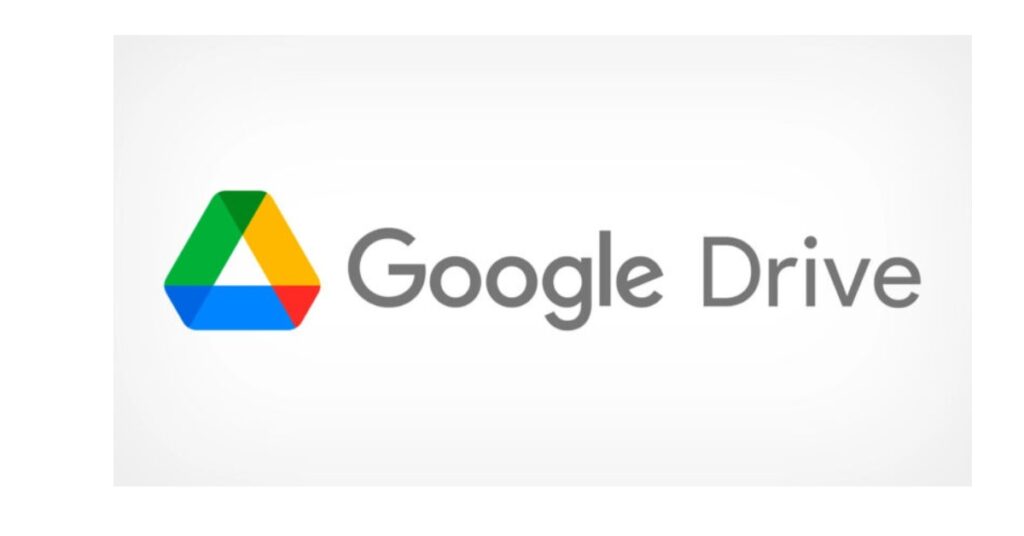
Google Drive is a cloud-based storage and collaboration platform provided by Google. Here are some of the pros, cons, and pricing details as of my last knowledge update in January 2022. Note that prices and features may have changed, so it’s always a good idea to check the official website for the most current information.
In the age of digital collaboration, the need for efficient and secure file-sharing platforms has never been more pronounced. Whether you’re a professional managing projects, a freelancer working remotely, or just someone wanting to share memories with friends, free file-sharing websites play a pivotal role. Join us as we explore 15 top-notch platforms that make file sharing a breeze.
We kick off our list with the undisputed champion – Google Drive. Offering 15GB of free cloud storage, it’s not just a platform; it’s a lifestyle. Access your documents, spreadsheets, and media files from anywhere with the simplicity and user-friendliness that Google is renowned for.
Pros:
- Free Storage: Google Drive offers 15 GB of free storage, which is more than many other cloud storage providers.
- Integration with Google Services: Seamless integration with other Google services like Google Docs, Sheets, Slides, and Forms for collaborative document editing and creation.
- Cross-Platform Compatibility: Google Drive is accessible on various platforms, including Windows, macOS, Android, and iOS.
- File Sharing and Collaboration: Easy sharing of files and folders with others, allowing real-time collaboration on documents and projects.
- Security Features: Google Drive provides robust security features, including two-factor authentication, encryption in transit, and at-rest encryption.
- Version History: Keeps track of version history for files, allowing users to revert to previous versions.
- Search Functionality: Powerful search functionality helps users quickly find files and folders.
- Offline Access: Users can access and work on their files even when offline by using offline mode.
Cons:
- Limited Free Storage: While 15 GB is generous, heavy users may find it insufficient, and additional storage comes at a cost.
- Privacy Concerns: Google’s business model relies on data collection, which may raise privacy concerns for some users.
- Dependency on Internet Connection: Access to files and collaboration features is dependent on a stable internet connection.
- File Size Limitations: There are file size limitations for uploads, and larger files may need to be compressed or divided.
- Storage Management: Google Drive is part of the overall Google storage ecosystem, and users may need to manage their storage across various services.
Pricing:
Google Drive had various pricing plans for additional storage beyond the free 15 GB. Pricing details can change, so it’s essential to check Google’s official pricing page for the most up-to-date information.
Some common pricing tiers include:
- 100 GB Plan: Monthly subscription fee for additional 100 GB of storage.
- 200 GB Plan: Monthly subscription fee for additional 200 GB of storage.
- 2 TB Plan: Monthly subscription fee for 2 TB of additional storage.
Remember to check for any changes in features or pricing on the official Google Drive website.
2. Jumpshare: All-in-One Visual Collaboration
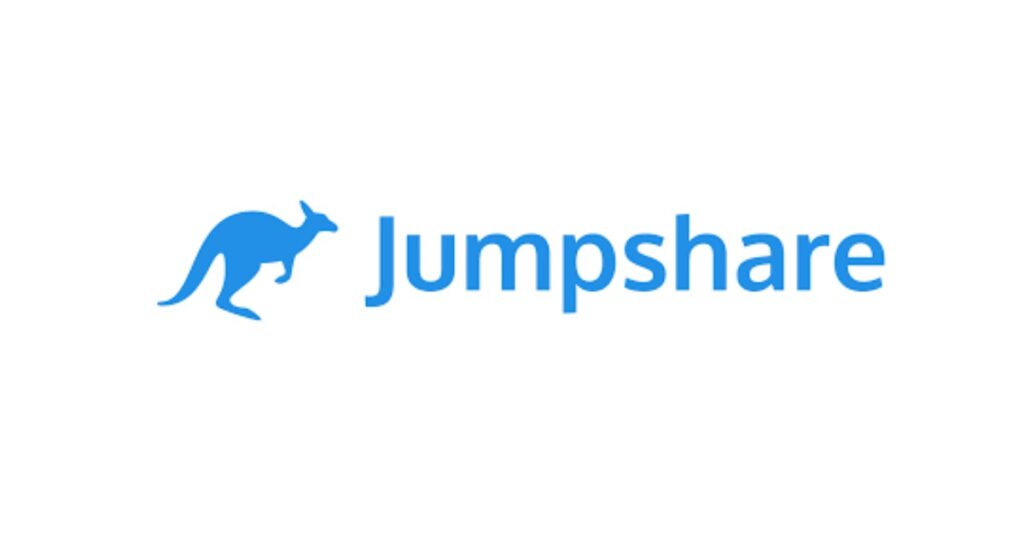
Jumpshare takes file sharing to the next level by combining file sharing, screenshots, video recording, GIF creation, and team collaboration. With an intuitive interface, it simplifies the process of sharing feedback, making it an ideal choice for collaborative projects.
Jumpshare is a file-sharing and collaboration platform that allows users to share files, screenshots, and recordings quickly. Here are some key features, pros, and cons of Jumpshare:
Key Features:
- File Sharing: Jumpshare allows users to share files of various types, including documents, images, videos, and more.
- Instant View: Supports over 200 file formats for instant file preview without the need for additional software.
- Screenshot Capture: Users can capture screenshots and annotate them before sharing.
- Screen Recording: Users can record their screens and share the recordings.
- Collaboration: Collaboration features enable real-time sharing and editing of documents, making it useful for teamwork.
- Custom Branding: Jumpshare provides options for custom branding, allowing users to personalize their sharing experience.
- Security Features: Offers password protection and expiration settings for shared files to enhance security.
Pros:
- User-Friendly Interface: Jumpshare is known for its intuitive and easy-to-use interface, making it accessible for users with varying technical expertise.
- Instant Preview: The ability to preview a wide range of file formats without downloading them is a convenient feature.
- Versatile File Types: Jumpshare supports various file types, making it suitable for sharing different kinds of content.
- Fast Sharing: Sharing files is quick and efficient, and recipients can access files without the need for a Jumpshare account.
- No Account Required for Recipients: Recipients of shared files do not need a Jumpshare account to access the shared content.
Cons:
- Limited Storage: Free accounts may have limitations on storage, and users may need to upgrade to a premium plan for more space.
- Internet Connection Required: Like most cloud-based platforms, Jumpshare relies on an internet connection for file sharing and collaboration.
- Pricing: While there is a free plan, additional features and increased storage may require a subscription, and users should be aware of the pricing structure.
- Dependency on the Platform: Jumpshare’s features are dependent on the platform, and users should check for compatibility with their devices.
It’s important to note that features, pricing, and other aspects of Jumpshare may have changed since my last update, so I recommend checking the official Jumpshare website for the latest and most accurate information.
3. Microsoft OneDrive: Microsoft’s Secure Cloud Haven
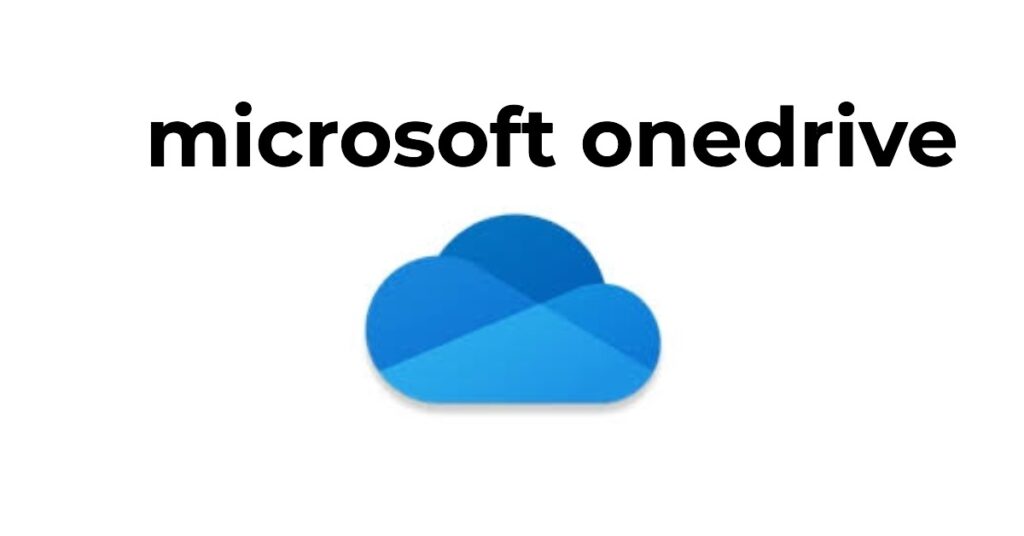
Microsoft OneDrive is a safe and secure cloud storage service that seamlessly integrates with Office 365. It not only allows you to save files and photos but also enhances collaboration by enabling co-authoring of Office documents across various platforms.
Certainly, here is information about Microsoft OneDrive without reference to the knowledge cutoff date:
Key Features:
- Integration with Microsoft 365: OneDrive is deeply integrated with Microsoft 365 applications, providing a seamless experience for users of Word, Excel, PowerPoint, and other Microsoft productivity tools.
- Real-Time Collaboration: Users can collaborate on documents in real-time, allowing multiple individuals to work on the same file concurrently.
- File Versioning: OneDrive automatically saves previous versions of files, enabling users to track changes and revert to earlier versions if necessary.
- Office Online: OneDrive provides access to Office Online, allowing users to create, view, and edit Microsoft Office documents directly in a web browser.
- Cross-Platform Compatibility: OneDrive is accessible on various platforms, including Windows, macOS, Android, and iOS, ensuring users can access their files from different devices.
- Automatic Camera Roll Backup: OneDrive can automatically back up photos and videos from the user’s camera roll on mobile devices.
- Security Features: OneDrive incorporates security features such as encryption, two-factor authentication, and access controls to protect user data.
Pros:
- Microsoft Ecosystem Integration: OneDrive seamlessly integrates with the broader Microsoft ecosystem, enhancing productivity for users who rely on Microsoft’s suite of applications.
- Generous Storage: Microsoft often provides a significant amount of free storage, and additional storage can be purchased if needed.
- Offline Access: Users can access their files offline, allowing them to work on documents even without an internet connection.
- Collaboration Features: Real-time collaboration, comments, and sharing options make it easy for teams to work together on projects.
- File Restoration: OneDrive allows users to restore files to previous versions within a certain timeframe.
Cons:
- Dependency on Internet: While offline access is available, the full functionality of OneDrive depends on a stable internet connection.
- Storage Limitations: Free accounts may have limited storage, and users may need to subscribe to a paid plan for additional space.
- Learning Curve: Users who are new to the Microsoft ecosystem might face a learning curve in navigating the features and settings.
- Privacy Concerns: As with any cloud service, users may have concerns about the privacy and security of their data, especially if it involves sensitive information.
It’s advisable to check the official Microsoft website for the most up-to-date information on features, pricing, and other details related to Microsoft OneDrive.
4. Box: Tailored for Professional File Sharing Website
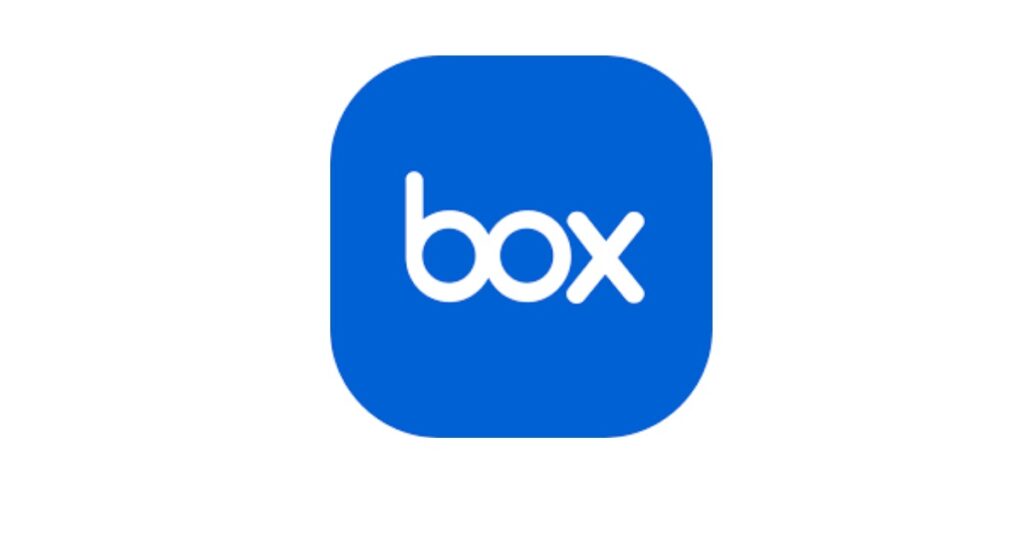
Box caters to the professional crowd, providing a robust file-sharing service designed for businesses and the IT sector. With features like secure data transfer, collaborative editing, and customizable privacy options, Box ensures efficient and secure file management.
Box is a cloud-based file storage and collaboration platform that provides businesses and individuals with the ability to store, share, and collaborate on files and documents. Here are some key features, pros, and cons associated with Box:
Key Features:
- File Storage and Sharing: Box allows users to store files in the cloud and share them with others. It provides options for file and folder sharing with different access levels.
- Collaboration Tools: Box facilitates collaboration with features like real-time editing, comments, and task assignments, making it suitable for team projects.
- Integration with Third-Party Apps: Box integrates with various third-party applications and services, providing users with a versatile and customizable platform.
- Security and Compliance: Box prioritizes security, offering features such as encryption, access controls, and compliance with industry regulations (e.g., HIPAA, GDPR).
- Version History: Users can access version history for files, allowing them to revert to previous versions if needed.
- Mobile Accessibility: Box is accessible on mobile devices through dedicated apps, enabling users to access their files on the go.
- Offline Access: Box provides the option for offline access, allowing users to work on files without an internet connection.
Pros:
- Collaborative Features: Box is well-known for its robust collaboration features, making it suitable for teams and businesses that require seamless teamwork.
- Security Measures: The platform places a strong emphasis on security, providing features that help protect sensitive data and meet compliance standards.
- Integration: Box integrates with various productivity tools and third-party applications, enhancing its versatility and usability within different workflows.
- User-Friendly Interface: The user interface of Box is generally user-friendly, making it accessible for users with varying levels of technical expertise.
- Customization: Users can customize Box to fit their specific needs, allowing for a more tailored experience.
Cons:
- Cost: While Box offers a free plan with limited storage, additional features and increased storage often require a subscription, and costs may vary based on the selected plan.
- Learning Curve: Some users may experience a learning curve when adopting Box, particularly if they are new to the platform.
- Storage Limits: Free accounts may have storage limitations, and users may need to upgrade to a paid plan for more space.
- Offline Access Limitations: While offline access is available, certain features may have limitations when used without an internet connection.
It’s important to note that features, pricing, and other aspects of Box may have changed since my last update. For the most current and accurate information, it’s recommended to visit the official Box website.
5. Amazon Drive: Your Central Hub for Multimedia Storage

Amazon Drive, the consumer-based cloud storage solution, offers a centralized space for storing photos, videos, and files. Prime members enjoy unlimited cloud photo storage, making it an excellent choice for multimedia enthusiasts at an affordable price.
Amazon Drive is a cloud storage service provided by Amazon that allows users to store and access their files securely in the cloud. Here are some key features, pros, and cons associated with Amazon Drive:
Key Features:
- Storage Options: Amazon Drive offers various storage plans, allowing users to choose the amount of storage that suits their needs.
- Integration with Amazon Photos: Amazon Drive is tightly integrated with Amazon Photos, providing users with a platform to store and organize their photos and videos.
- File Sharing: Users can share files and folders with others, and Amazon Drive provides options to control access and permissions.
- Mobile Accessibility: Amazon Drive has mobile apps for Android and iOS, enabling users to access and manage their files on the go.
- Amazon Prime Benefits: Amazon Prime members often receive additional benefits with Amazon Drive, such as unlimited photo storage and reduced prices on additional storage plans.
Pros:
- Integration with Amazon Services: Seamless integration with other Amazon services like Amazon Photos and Amazon Music enhances the overall user experience.
- Affordable Plans: Amazon Drive often offers competitive pricing for its storage plans, and Amazon Prime members may receive additional storage benefits.
- Amazon Photos Benefits: Prime members can take advantage of unlimited photo storage as part of their membership, providing a cost-effective solution for storing and backing up photos.
- Secure Storage: Amazon Drive prioritizes security, offering encryption and secure access controls to protect user data.
- Reliability: Being part of Amazon’s cloud infrastructure, Amazon Drive benefits from the reliability and scalability associated with Amazon Web Services (AWS).
Cons:
- File Size Limitations: Amazon Drive may have limitations on individual file sizes, and users need to be aware of these restrictions when uploading larger files.
- Limited Collaboration Features: Compared to some other cloud storage services, Amazon Drive may have fewer collaboration features, making it less suitable for extensive teamwork.
- Interface: Some users may find the user interface less intuitive compared to other cloud storage platforms.
- Dependency on Internet Connection: Full functionality depends on a stable internet connection, and offline access may have limitations.
It’s important to note that features, pricing, and other aspects of Amazon Drive may have changed since my last update. For the most current and accurate information, it’s recommended to visit the official Amazon Drive website.
6. Dropbox: The Gold Standard in Cloud Storage
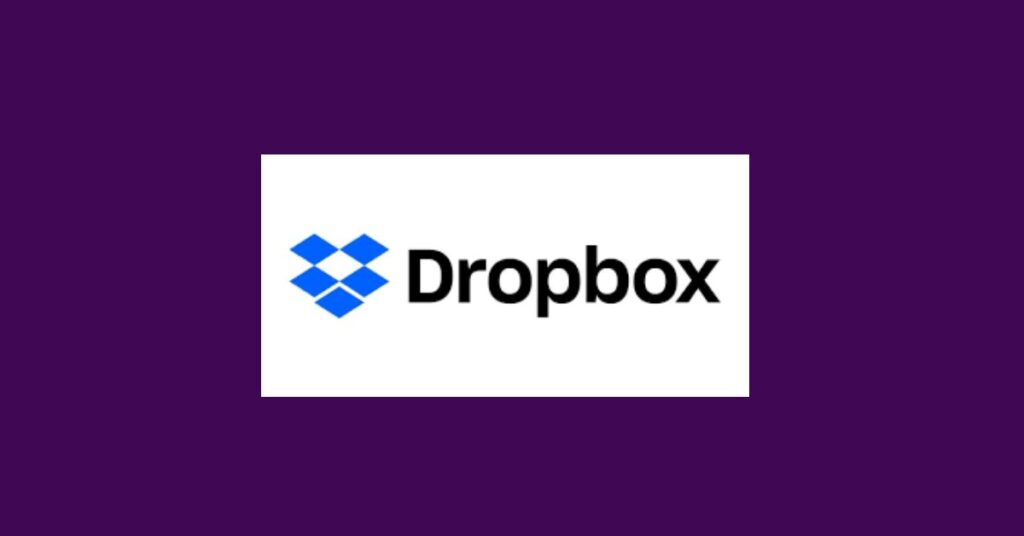
Dropbox has long been the gold standard in file sharing. Known for its simplicity, seamless synchronization, and integration with numerous third-party apps, Dropbox is a user-friendly choice despite its initial 2GB storage limit on free accounts.
Key Features:
- File Storage and Sharing: Dropbox lets you store and share files, making it easy to collaborate with others.
- Sync Across Devices: Your files sync across devices, ensuring you can access them from your computer, phone, or tablet.
- File Versioning: Dropbox keeps track of file versions, allowing you to revert to previous versions if needed.
- Collaboration Tools: It provides collaboration tools for real-time editing and comments, making teamwork smoother.
Pros:
- User-Friendly: Dropbox has an easy-to-use interface, making it accessible for users of all levels.
- Cross-Platform Access: You can access your files on Windows, macOS, Android, and iOS devices.
- Free Storage: Offers free storage with options to upgrade for more space.
- Integration: Integrates with various apps and services for added functionality.
Cons:
- Limited Free Storage: The free plan has limited storage, and more space may require a paid subscription.
- Internet Dependency: Full functionality relies on a stable internet connection.
- Competition: Faces competition from other cloud storage services.
- Security Concerns: Some users may have security concerns related to cloud storage.
For the latest information on features and pricing, it’s advisable to check the official Dropbox website.
7. Hightail: Team Collaboration Made Easy

Hightail is a file-sharing and collaboration platform that allows users to send, receive, and collaborate on large files. Below are key features, pros, and cons associated with Hightail:
Formerly known as YouSendIt, Hightail is a file sharing websites geared towards team collaboration. Its unique feature, “Spaces,” allows team members to share files, videos, and images, fostering seamless collaboration.
Key Features:
- File Sharing: Hightail focuses on enabling the easy sharing of large files, making it suitable for professionals and creative teams.
- Collaboration: Users can collaborate on projects by sharing files, adding comments, and receiving feedback within the platform.
- Security Features: Hightail emphasizes security, offering features like file encryption and access controls to protect sensitive information.
- Tracking and Notifications: Provides tracking and notification features, allowing users to see when files are accessed or downloaded.
- Custom Branded Workspaces: Users can create custom-branded workspaces, adding a professional touch to file sharing and collaboration efforts.
Pros:
- Large File Support: Hightail is designed to handle large file sizes efficiently, making it suitable for sharing high-resolution images, videos, and other sizable documents.
- User-Friendly Interface: The platform is known for its user-friendly interface, making it easy for both senders and recipients to navigate.
- Commenting and Feedback: Collaboration features include the ability to add comments and receive feedback directly within the platform.
- Integration: Integrates with various third-party applications, enhancing its compatibility with other tools.
Cons:
- Pricing: Depending on the user’s needs, the pricing structure may be seen as relatively higher compared to some other file-sharing platforms.
- Limited Free Plan: While there is a free plan, users with more extensive collaboration and file-sharing needs may need to subscribe to a paid plan.
- Dependency on Internet: Like other cloud-based platforms, Hightail requires a stable internet connection for full functionality.
- Competition: Faces competition from other file-sharing and collaboration platforms in the market.
Please note that the features, pricing, and other details related to Hightail may have changed since my last update. It is recommended to visit the official Hightail website for the most current and accurate information.
8. MediaFire: Simplifying Your Workflow

MediaFire is a cloud storage and file hosting service that allows users to store, share, and access files from anywhere. Here are key features, pros, and cons associated with MediaFire:
MediaFire simplifies the file-sharing process, providing 10GB of storage space and a 4GB file upload limit. With easy sharing options through email, links, or social networks, it’s a go-to tool for hassle-free file storage and sharing.
Key Features:
- File Storage and Sharing: MediaFire provides cloud storage for files and allows users to share them with others.
- File Access Anywhere: Users can access their files from various devices, including computers, smartphones, and tablets.
- File Versioning: MediaFire automatically saves previous versions of files, enabling users to revert to earlier states if needed.
- Collaboration Tools: It offers collaboration features such as file and folder sharing, making it suitable for teamwork.
- Media Playback: MediaFire supports media playback directly from the platform, allowing users to preview audio and video files.
Pros:
- Generous Free Storage: MediaFire often provides a significant amount of free storage space for users.
- Direct Linking: Users can generate direct links to files, making it easy to share specific files or folders.
- Easy File Upload: Uploading files to MediaFire is usually straightforward and user-friendly.
- No Account Required for Recipients: Recipients can access shared files without needing a MediaFire account.
- Affordable Premium Plans: MediaFire offers affordable premium plans for users who require additional storage and features.
Cons:
- Ads in Free Version: The free version may include ads, which could be a consideration for some users.
- Limited Collaboration Features: While it supports basic collaboration, it may have fewer advanced collaboration features compared to some other platforms.
- Offline Access Limitations: The ability to access files offline may be limited in the free version.
- Interface: Some users may find the user interface less polished compared to other cloud storage services.
Please note that features, pricing, and other details related to MediaFire may have changed since my last update. For the most current and accurate information, it’s recommended to visit the official MediaFire website.
9. ShareFile by Citrix: Enterprise-Grade Secure File Sharing

ShareFile by Citrix is a cloud-based file-sharing and collaboration platform designed for businesses. It provides secure file storage, sharing, and collaboration features, with an emphasis on meeting the needs of professionals and enterprises. Here are key features, pros, and cons associated with ShareFile:
Citrix ShareFile targets enterprise companies with its secure managed file transfer (MFT) software. Packed with world-class security features, password protection, and easy integration with third-party storage services, ShareFile is a powerhouse for secure data sharing.
Key Features:
- Secure File Sharing: ShareFile prioritizes security, offering encrypted file sharing to protect sensitive information.
- Collaboration Tools: Provides tools for real-time collaboration, allowing multiple users to work on the same files simultaneously.
- Custom Workspaces: Users can create custom-branded workspaces, enhancing the professional appearance of shared content.
- File Versioning: ShareFile keeps track of file versions, enabling users to revert to previous versions if needed.
- Access Controls: Offers granular access controls, allowing administrators to manage user permissions for files and folders.
Pros:
- Security Focus: ShareFile is known for its robust security features, making it suitable for businesses with strict security requirements.
- Integration with Citrix Services: Integrates seamlessly with other Citrix services, creating a comprehensive solution for businesses.
- Large File Support: Designed to handle large files efficiently, making it suitable for professionals dealing with sizable documents, images, or videos.
- Compliance: Meets compliance standards for industries such as healthcare, finance, and legal, providing a secure solution for sensitive data.
- Customer Support: Citrix typically offers strong customer support for ShareFile users.
Cons:
- Cost: ShareFile may have a higher cost compared to some other file-sharing platforms, especially for businesses with extensive collaboration needs.
- Learning Curve: Users new to the platform may experience a learning curve, particularly if they are not familiar with Citrix services.
- Dependency on Internet: Full functionality requires a stable internet connection, and offline access may have limitations.
- Interface: Some users may find the user interface less intuitive compared to simpler file-sharing platforms.
It’s important to note that features, pricing, and other aspects of ShareFile by Citrix may have changed since my last update. For the most current and accurate information, it’s recommended to visit the official Citrix ShareFile website.
10. Zippyshare: No Limits, No Accounts, No Fuss
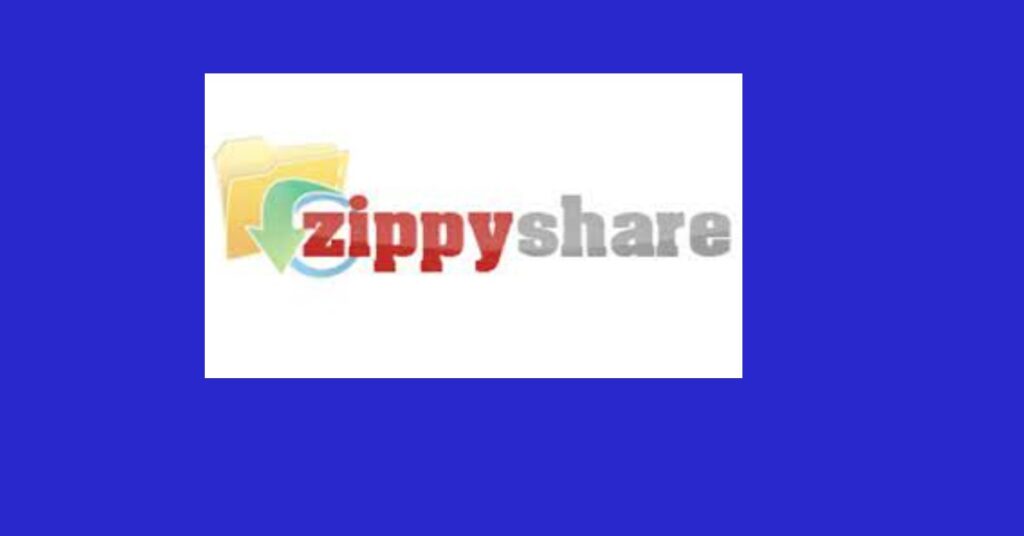
Zippyshare is a no-frills, free file-sharing website with no download and upload limits. Although limited to files up to 500MB and a 30-day retention policy, its simplicity and ease of use make it a convenient choice for quick sharing.
Zippyshare is a file sharing websites that allows users to upload and share files with others. Here are key features, pros, and cons associated with Zippyshare:
Key Features:
- File Hosting: Zippyshare provides a platform for users to host and share files, making it easy for others to download them.
- Free Service: Zippyshare is typically free to use, allowing users to upload and share files without a subscription.
- No Account Required: Users can upload and share files without creating an account, simplifying the process for quick file sharing.
- Anonymous File Sharing: Zippyshare allows users to share files anonymously, without the need to provide personal information.
Pros:
- Ease of Use: Uploading and sharing files on Zippyshare is straightforward, with no complex registration process.
- Quick Sharing: Users can quickly share files with others by providing them with the generated download link.
- No Expiration for Files: Uploaded files typically stay available for download for an extended period, providing long-term access.
- No Waiting Time: Users can often download files without facing waiting times or delays.
Cons:
- Limited Features: Zippyshare primarily focuses on basic file hosting and sharing, lacking advanced collaboration or versioning features.
- No User Accounts: While not requiring an account offers anonymity, it also means there’s no personalized space to manage uploaded files.
- Ads: The service may display ads, and users should be cautious while navigating the site.
- File Size Limitations: Zippyshare may have limitations on the maximum file size that can be uploaded.
It’s important to note that Zippyshare is mainly designed for simple file hosting and sharing and may not offer the advanced features found in comprehensive cloud storage and collaboration platforms. Additionally, the availability of features and policies may change over time, so users should be mindful of the terms and conditions provided by the service.
11. DropSend: Sending Large Files Made Effortless

DropSend is a file transfer and sharing service designed to facilitate the sending of large files securely. Here are key features, pros, and cons associated with DropSend:
DropSend takes pride in being “the” platform for sending large files, allowing uploads of files up to 8GB in size. With secure 256 AES High-Level Encryption, it ensures the safe transfer of sizable data without the hassles of email attachments.
Key Features:
- File Transfer: DropSend allows users to send and receive large files, overcoming email attachment size limitations.
- Secure Transfers: The service typically employs secure file transfers to protect sensitive information during transmission.
- File Storage: Some versions of DropSend provide cloud storage, allowing users to store files in addition to sending them.
- Email Integration: Users can send files directly from their email accounts using DropSend, making it convenient for email attachments.
Pros:
- Ease of Use: DropSend is designed to be user-friendly, providing a straightforward process for sending and receiving files.
- Large File Support: It specializes in handling large files, making it suitable for users who need to share sizable documents, images, or videos.
- Delivery Tracking: Some versions of DropSend offer tracking features, allowing users to see when files are delivered and downloaded.
- Password Protection: Users can add password protection to their files for an added layer of security.
Cons:
- Limited Free Plan: While DropSend offers a free plan, it may come with limitations on file size and other features.
- Pricing: Users with extensive file sharing needs may need to subscribe to a paid plan, and the pricing structure may vary.
- Not Suitable for Collaboration: DropSend is more focused on file transfers and may lack advanced collaboration features found in comprehensive collaboration platforms.
- Dependency on Internet: Full functionality requires a stable internet connection, and offline access may be limited.
It’s important to check the specific features and pricing associated with the version of DropSend you are considering, as offerings may vary. Users should visit the official DropSend website for the most up-to-date information.
12. WeTransfer: Simplicity Redefined in File Transfer websites

WeTransfer excels in simplicity and ease of use. This platform allows users to send files up to 2GB in size effortlessly. With a straightforward interface, it’s an excellent choice for quick and hassle-free file transfers without the need for an account.
WeTransfer is an online file-sharing service that allows users to send and receive large files. Here are key features, pros, and cons associated with WeTransfer:
Key Features:
- File Transfer: WeTransfer specializes in transferring large files, making it convenient for users who need to share files that are too big for email attachments.
- Ease of Use: WeTransfer is known for its simple and user-friendly interface, allowing users to quickly send files without the need for complex setups.
- Email Notifications: Users receive email notifications when files are successfully sent and downloaded, providing transparency in the process.
- No Account Required: WeTransfer typically allows users to send files without the need for creating an account, simplifying the sharing process.
Pros:
- Free Plan: WeTransfer offers a free plan that allows users to send files up to a certain size limit without incurring costs.
- User-Friendly Interface: The platform is designed to be easy to use, making it accessible for users with varying levels of technical expertise.
- Quick Sharing: Users can quickly share files by generating download links, and recipients can access files without creating an account.
- No Software Installation: WeTransfer operates through a web browser, eliminating the need for users to install additional software.
Cons:
- Limited Storage Duration: Files sent via WeTransfer are typically available for download for a limited time (usually seven days), after which they are automatically deleted.
- File Size Limitations (Free Plan): The free plan may have limitations on the size of files that can be sent, and larger files may require a paid subscription.
- No File Editing or Collaboration: WeTransfer is primarily designed for file transfers and lacks advanced collaboration features found in comprehensive collaboration platforms.
- Ads in Free Version: The free version may display ads, and users should be cautious while navigating the site.
It’s important to note that features, pricing, and other details associated with WeTransfer may have changed since my last update. Users should check the official WeTransfer website for the most up-to-date information on plans, features, and usage policies.
13. Sync: Secure and Private File Sharing Websites

Sync is a cloud storage and file-sharing service designed for individuals and businesses. Here are key features, pros, and cons associated with Sync:
Sync stands out for its focus on security and privacy. Offering end-to-end encryption, it ensures that your files are kept private and secure during both storage and transfer. With a user-friendly interface, Sync is a trustworthy option for those prioritizing data protection.
Key Features:
- File Storage and Sharing: Sync allows users to store and share files in the cloud, providing a platform for collaboration and access from multiple devices.
- End-to-End Encryption: Sync emphasizes security and privacy by offering end-to-end encryption, ensuring that only authorized users can access the stored data.
- Access Control: Users can set access permissions and control who can view or edit specific files and folders.
- File Versioning: Sync keeps track of file versions, allowing users to revert to previous versions if needed.
- Mobile Accessibility: Sync has mobile apps for Android and iOS, enabling users to access their files on the go.
Pros:
- Security Focus: The end-to-end encryption provides a high level of security and privacy for stored data.
- User-Friendly Interface: Sync is designed to be user-friendly, making it accessible for individuals and businesses alike.
- Collaboration Tools: Users can collaborate in real-time, making it suitable for teamwork and project collaboration.
- Cross-Platform Compatibility: Sync works across various platforms, including Windows, macOS, Android, and iOS.
- No File Size Limitations: Sync typically does not impose file size limitations, allowing users to store and share large files.
Cons:
- Limited Free Plan: While Sync offers a free plan, users with more extensive storage needs may need to subscribe to a paid plan.
- Learning Curve: Some users may experience a learning curve, particularly if they are new to the platform.
- Dependency on Internet: Full functionality requires a stable internet connection, and offline access may have limitations.
- Competition: Faces competition from other cloud storage and collaboration platforms in the market.
It’s important to note that features, pricing, and other details associated with Sync may have changed since my last update. Users should check the official Sync website for the most up-to-date information on plans, features, and security measures.
14. Mega: Mega Storage for Mega Needs
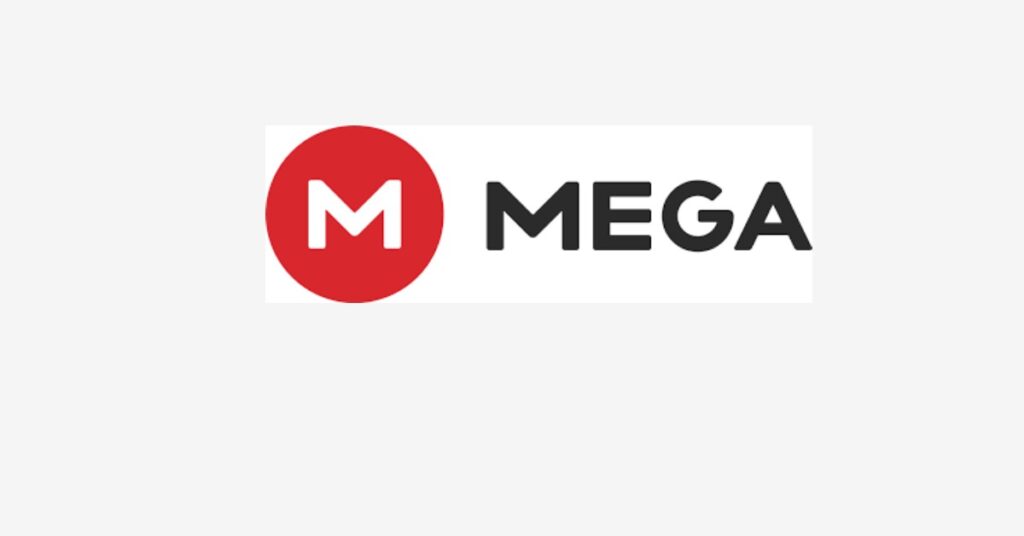
Mega provides generous free cloud storage (up to 20GB) coupled with end-to-end encryption for enhanced security. It stands out as a privacy-focused platform, making it suitable for users who require ample storage space and a heightened level of data protection.
Mega is a cloud storage and file-sharing service known for its emphasis on privacy and security. Here are key features, pros, and cons associated with Mega:
Key Features:
- End-to-End Encryption: Mega provides end-to-end encryption, ensuring that only authorized users can access the contents of the stored files.
- Generous Free Storage: Mega offers a generous amount of free storage space to users who sign up for a free account.
- File Versioning: Mega keeps track of file versions, allowing users to restore or access previous versions of files.
- Secure File Sharing: Users can share files securely with others by generating shareable links with various access permissions.
- Cross-Platform Compatibility: Mega is accessible on various platforms, including Windows, macOS, Linux, Android, and iOS.
Pros:
- Security and Privacy: Mega’s strong emphasis on encryption and privacy features makes it appealing to users who prioritize data security.
- Free Storage: Mega offers a substantial amount of free storage space, making it attractive for users with modest storage needs.
- User-Controlled Encryption Keys: Users have the option to control their encryption keys, providing an extra layer of privacy.
- Collaboration Tools: Mega supports collaboration features, allowing users to work on documents and projects together.
- Large File Support: Mega is designed to handle large file sizes, making it suitable for users dealing with sizable documents, images, or videos.
Cons:
- Learning Curve: Some users may find Mega’s interface and features to have a learning curve, especially if they are new to the platform.
- No File Recovery: Unlike some other cloud storage services, Mega does not have a trash or recycle bin, which means deleted files cannot be recovered.
- Limited Free Bandwidth: Free users may experience limitations on the amount of bandwidth they can use for file transfers.
- Dependency on Internet: Full functionality depends on a stable internet connection, and offline access may have limitations.
It’s important to note that features, pricing, and other details associated with Mega may have changed since my last update. Users should check the official Mega website for the most up-to-date information on plans, features, and security measures.
15. FileDropper: Simple and Efficient File Hosting
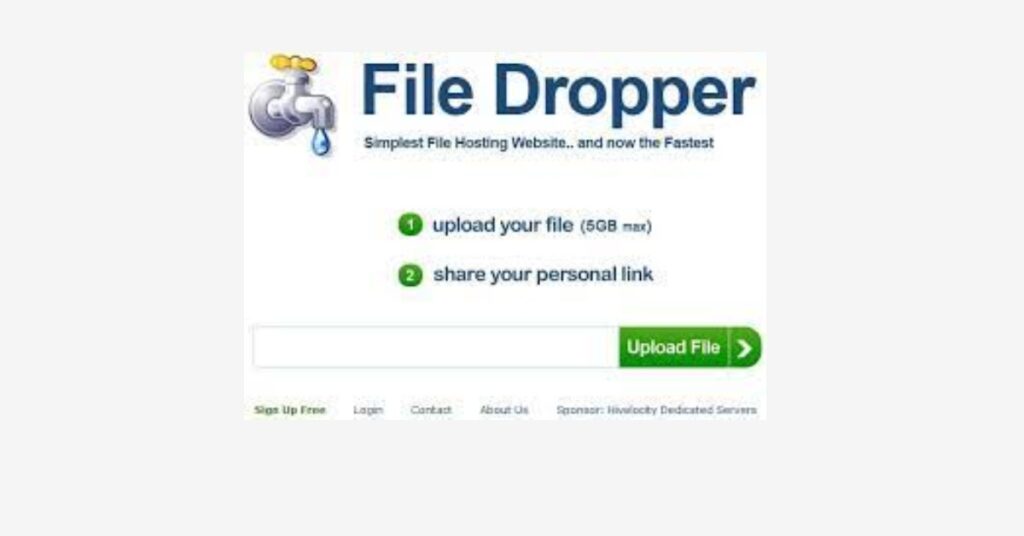
FileDropper simplifies file hosting with its no-frills approach. Users can upload files up to 5GB without the need for an account. The platform provides a direct link for sharing, making it a straightforward solution for those looking for quick and easy file hosting.
FileDropper is a file sharing websites service that allows users to upload and share files easily. Here are key features, pros, and cons associated with FileDropper:
Key Features:
- File Hosting: FileDropper provides a platform for users to host and share files with others.
- Easy File Sharing: Users can quickly share files by generating links that recipients can use to download the files.
- No Account Required: FileDropper typically allows users to upload and share files without creating an account, simplifying the sharing process.
- Direct Download Links: FileDropper provides direct download links, making it convenient for users to access shared files.
Pros:
- No Account Requirement: Users can upload and share files without the need to create an account, reducing barriers for quick file sharing.
- Simple Interface: FileDropper is designed to be user-friendly, with a straightforward interface for easy navigation.
- Quick File Sharing: Users can share files quickly by providing recipients with a direct link to download the files.
- No Waiting Time: Unlike some other file-sharing services, FileDropper often allows for immediate downloads without waiting times.
Cons:
- Limited Features: FileDropper primarily focuses on basic file hosting and sharing, lacking advanced collaboration or versioning features.
- File Size Limitations: There may be limitations on the maximum file size that can be uploaded to FileDropper.
- No File Management: FileDropper may lack features for users to manage their uploaded files over time, such as file organization or version history.
- No User Accounts: The absence of user accounts means there is no personalized space for users to manage and track their uploaded files.
It’s important to note that FileDropper is generally designed for simple file hosting and sharing and may not offer the advanced features found in comprehensive cloud storage and collaboration platforms. Additionally, the availability of features and policies may change over time, so users should be mindful of the terms and conditions provided by the service.
With these additional four contenders, your arsenal of free file-sharing websites is now even more robust. Whether you prioritize simplicity, security, ample storage, or quick hosting, there’s a platform tailored to meet your specific file-sharing requirements. Empower your collaborative efforts and make file sharing a seamless part of your digital experience!
Frequently Asked Questions (FAQs) About Free File Sharing Websites
Q1: What are free file sharing websites?
A1: Free file sharing websites are online platforms that allow users to upload, store, and share digital files with others. These platforms offer various features such as cloud storage, collaboration tools, and secure file transfer without charging any fees for basic usage.
Q2: Why should I use free file sharing websites?
A2: Free file sharing websites provide a convenient and efficient way to share files with others, collaborate on projects, and access your files from different devices. Whether you’re a professional, freelancer, or casual user, these platforms simplify the process of storing and sharing digital content.
Q3: Are free file sharing websites secure?
A3: The security of free file sharing websites varies. While many platforms implement security measures such as encryption and password protection, it’s essential to choose reputable services with a focus on user privacy. Always review the security features of a platform before sharing sensitive information.
Q4: How much storage do free file sharing websites typically offer?
A4: The amount of storage provided by free file sharing websites varies from platform to platform. Commonly, these services offer a few gigabytes of free storage space, with the option to purchase additional storage if needed. Review the storage limits of each platform to determine the best fit for your requirements.
Q5: Can I collaborate with others on free file sharing websites?
A5: Yes, collaboration is a key feature of many free file sharing websites. Platforms like Google Drive, Microsoft OneDrive, and Box allow users to collaborate on documents, edit files in real-time, and leave comments. Check the collaboration features of a platform to ensure it meets your project needs.
Q6: Do I need to create an account to use free file sharing websites?
A6: In most cases, creating an account is required to use free file sharing websites. Account creation allows users to manage their files, track sharing activities, and access additional features. However, some platforms may offer limited functionality for anonymous users.
Q7: Are there file size limits on free file sharing websites?
A7: Yes, free file sharing websites often impose file size limits for individual uploads. These limits can vary, with some platforms allowing larger files than others. If you frequently deal with large files, consider the maximum file size allowed by a platform when choosing a file sharing service.
Q8: Can I share files with people who don’t have accounts on these platforms?
A8: Many free file sharing websites allow you to share files with individuals who don’t have accounts on the platform. You can often generate shareable links or use email invites to grant access to specific files or folders. Check the sharing options offered by each platform for details.
Q9: Are there any restrictions on the types of files I can share?
A9: While most free file sharing websites support a wide range of file types, some platforms may have restrictions on specific file formats for security reasons. It’s advisable to check the supported file types and any restrictions imposed by a platform to ensure compatibility.
Q10: Can I access my files from different devices?
A10: Yes, one of the primary advantages of free file sharing websites is the ability to access your files from different devices. Whether you’re using a computer, smartphone, or tablet, these platforms typically offer cross-device accessibility, allowing you to view, edit, and share your files seamlessly.

